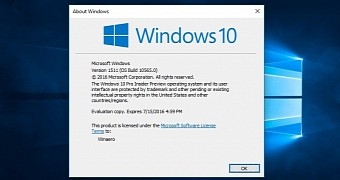Now that Windows 10 Creators Update has become available for everyone, Microsoft prepares to discontinue another old version, as per the company’s Windows as a Service approach.
Windows 10 version 1511, also known as the November Update, is projected to reach end of servicing on October 10, which means that all devices running it would no longer receive updates and security patches beyond this date. This is the sibling of end of support for older Windows versions, and without support, devices remain vulnerable to attacks and not getting any bug fixes.
Version 1511 was the first update that Windows 10 received after the official launch in July 2015, and Microsoft says that all customers should upgrade to the Creators Update as soon as possible.
“Windows as a service is an ongoing process: New releases are deployed while old releases are retired. Today, many customers are broadly deploying Windows 10 1703 after successful pilot deployments. And many other customers are in the process of updating the last of their Windows 10 1511 PCs in preparation for the upcoming October 10th, 2017, end of servicing date,” the firm says.
Fall Creators Update landing in September
For enterprises, the software giant advises to use a 3-step deployment strategy that would be based on planning and preparing, targeted deployment, and broad deployment across the organization, though it’s worth mentioning that in case none of these stages were performed already, the whole process should be substantially sped up to be complete before October.
A new Windows 10 version is also landing in September as Fall Creators Update (version 1709), with Microsoft currently working on finalizing the release and fixing the latest bugs with help from users enrolled in the Windows Insider program.
Both the Creators Update and the Fall Creators Update (version 1703 and 1709, respectively) will be serviced for 18 months after launch, as part of the company’s Semi-Annual Channel approach that relies on twice-per-year feature update releases.

 14 DAY TRIAL //
14 DAY TRIAL //